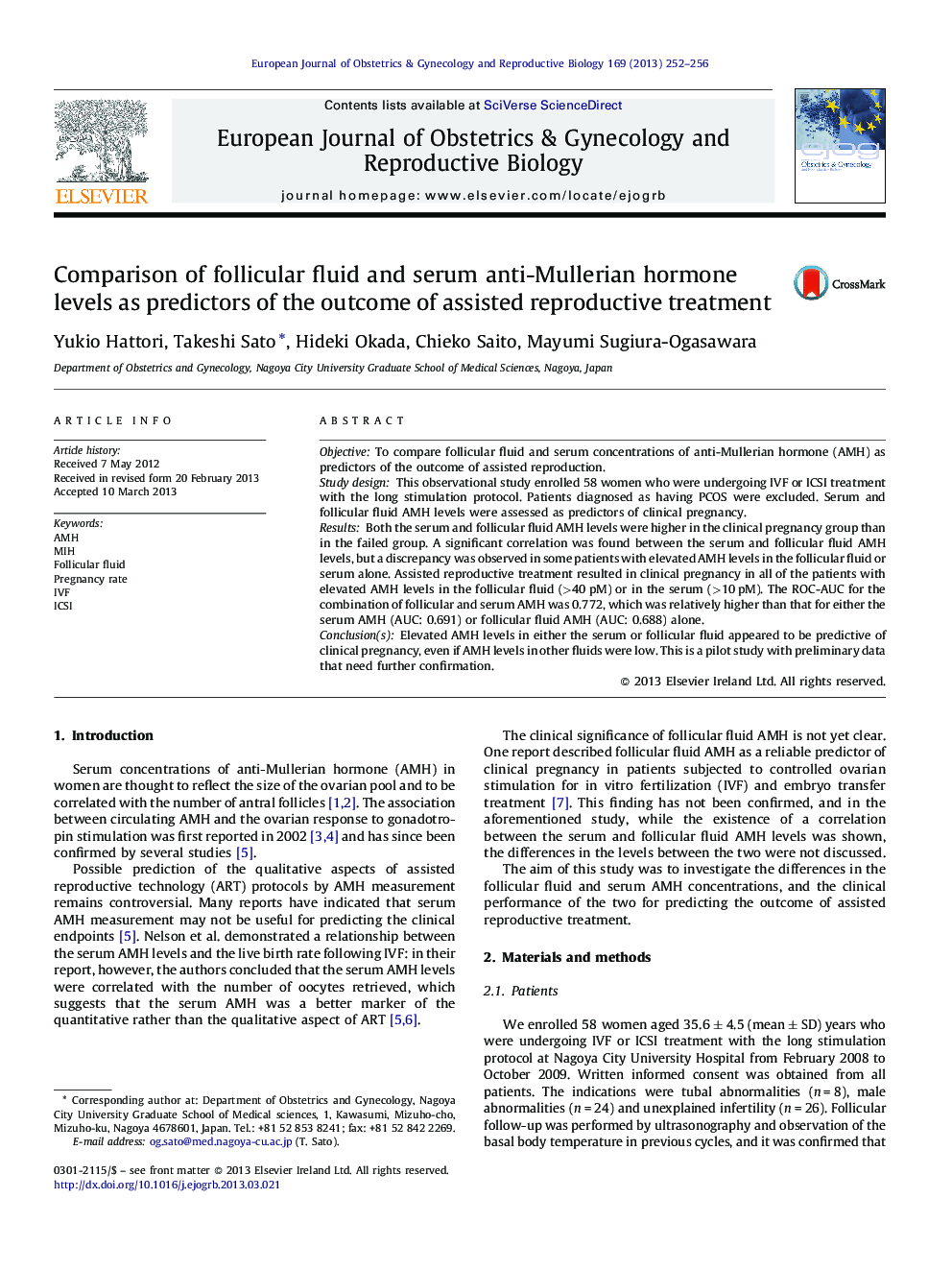| Article ID | Journal | Published Year | Pages | File Type |
|---|---|---|---|---|
| 3919924 | European Journal of Obstetrics & Gynecology and Reproductive Biology | 2013 | 5 Pages |
ObjectiveTo compare follicular fluid and serum concentrations of anti-Mullerian hormone (AMH) as predictors of the outcome of assisted reproduction.Study designThis observational study enrolled 58 women who were undergoing IVF or ICSI treatment with the long stimulation protocol. Patients diagnosed as having PCOS were excluded. Serum and follicular fluid AMH levels were assessed as predictors of clinical pregnancy.ResultsBoth the serum and follicular fluid AMH levels were higher in the clinical pregnancy group than in the failed group. A significant correlation was found between the serum and follicular fluid AMH levels, but a discrepancy was observed in some patients with elevated AMH levels in the follicular fluid or serum alone. Assisted reproductive treatment resulted in clinical pregnancy in all of the patients with elevated AMH levels in the follicular fluid (>40 pM) or in the serum (>10 pM). The ROC-AUC for the combination of follicular and serum AMH was 0.772, which was relatively higher than that for either the serum AMH (AUC: 0.691) or follicular fluid AMH (AUC: 0.688) alone.Conclusion(s)Elevated AMH levels in either the serum or follicular fluid appeared to be predictive of clinical pregnancy, even if AMH levels in other fluids were low. This is a pilot study with preliminary data that need further confirmation.
